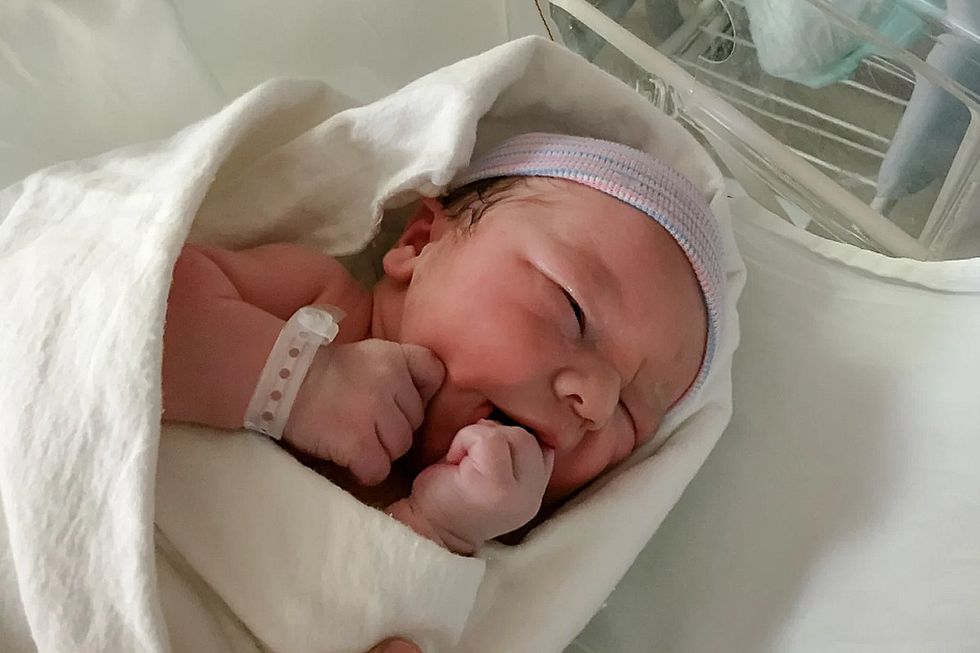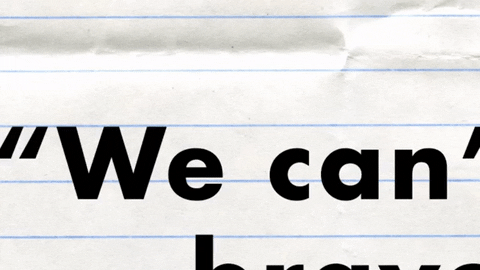While on the campaign trail, Donald Trump repeatedly lambasted President Barack Obama for refusing to use the phrase “radical Islamic terrorism” and promised that, if elected, he would insist upon the term. Starting in his inaugural address, Trump vowed to “unite the civilized world against radical Islamic terrorism, which we will eradicate completely from the face of the Earth.”
He has simultaneously developed policy to match this single-minded focus ever since. His administration has proposed renaming the federal government’s existing Countering Violent Extremism program—which works with local communities to prevent people from being recruited by extremist groups—to “Countering Islamic Extremism” or “Countering Radical Islamic Extremism.” If these changes are realized, the program would no longer pursue non-Muslim violent groups, such as neo-Nazi and white supremacist hate groups.
Both the insistence on rhetoric and policy proposals have been met with criticism. During the 2016 presidential campaign, Obama rebuked Trump’s emphasis on changing the wording, saying, “There is no magic to the phrase ‘radical Islam,’” and labeling Trump’s mindset as “dangerous.” For Obama, the phrase unfairly incriminates an entire religion for the actions of a violent minority. By insisting that America’s fight is with Islam rather than with specific violent organizations, the then-president argued Trump was, in fact, helping groups such as ISIS and al-Qaeda, who seek a civilizational war. “If we fall into the trap of painting all Muslims with a broad brush, and imply that we are at war with an entire religion,” Obama said, “then we are doing the terrorists’ work for them.”
Some critics point out that the narrowed focus would be misguided, since the majority of domestic terrorism is actually carried out by right-wing extremists, such as white supremacists and antigovernment militias. According to research by the Anti-Defamation League, 74 percent of murders by U.S. extremists between 2007 and 2016 were committed by right-wing radicals. For example, the perpetrators of the 2015 Charleston church shooting, the 2015 Colorado Planned Parenthood shooting, and the 2012 Wisconsin Sikh temple shooting were all white males who held extreme right-wing beliefs.
Other critics argue that the policy, by zeroing in on American Muslims, is unconstitutional. Still others note that the change is bound to fail on its own terms, as Muslim-American organizations that have previously worked with the government to identify potentially violent community members would likely be unwilling to cooperate further. Already, three community organizations have declined federal grants and have withdrawn from the CVE government program in response to Trump’s proposal. (It is important to note that prior to Trump, the program’s effectiveness was already questionable and targeted Muslims almost exclusively. Still, the rebranding is significant because, as expert J.M. Berger from the International Centre for Counter-terrorism wrote in The Washington Post, it “shout[s] to the world that America’s political leadership will not oppose white nationalism—even in the flimsiest and most ephemeral way imaginable.”)
Trump and other Republicans continue to insist that the language of “radical Islam” is simply correctly diagnosing the problem faced by the United States. But in fact, this verbiage is deeply rooted in the way Americans and others in the Western world think about religion and its relationship to violence. The central issue is what theology scholar William Cavanaugh calls “the myth of religious violence” in his 2009 book of the same name.
This myth, he writes, “is the idea that religion is a transhistorical and transcultural feature of human life, essentially distinct from ‘secular’ features, such as politics and economics, which has a peculiarly dangerous inclination to promote violence.” Dissecting this theory, Cavanaugh identified two problems with the way Western societies approach religious violence.
First, “religion” is not a category that is universally applicable. “What counts as religious or secular in any given context is a function of different configurations of power,” he says. Religion is not like, say, water, which has a specific molecular makeup that can be identified in any culture and at any time. In fact, water would exist whether or not humans gave it a name and distinguished it from sand. Contrast this with religion, which is a product of human societies. Religion is not found in nature. It only comes into being when given a label and contrasted with other aspects of society. This does not deny that there are systems of beliefs and practices that are held dear by communities around world, but, rather, disputes that they can all be grouped together and classified as “religion.” As Cavanaugh writes, “the category of religion does not simply describe a new social reality, but helps bring it into being and enforce it.” Religion as a universal category—as a genus that includes species such as Islam and Roman Catholicism—is therefore created through the process of describing it.
[quote position="full" is_quote="false"]Western societies have assumed the realm of religion to be especially disposed to violence, understanding it to be fundamentally uncompromising, divisive, and fanatical.[/quote]
Additionally, Western societies have assumed the realm of religion to be especially disposed to violence, understanding it to be fundamentally uncompromising, divisive, and fanatical. Yet, these are also characteristics of secular ideologies, such as nationalism, communism, and capitalism. Why then do we insist that religion is a unique problem? We are so invested in the idea, Cavanaugh argues, because it is “one of the foundational legitimating myths of the liberal nation-state.” In other words, the idea that religion is inherently violent justifies our modern social and political structures, where reason, not faith, ostensibly reigns supreme. Embedded in the myth is a value judgment: Our “secular” systems are deemed good while other societies’ “religious” systems are bad. It is not a neutral proposition, but a dangerous one. “The myth of religious violence helps to construct and marginalize a religious Other, prone to fanaticism, to contrast with the rational, peace-making, secular subject,” Cavanaugh said. For Trump, this contrast is crystal clear: American violence creates freedom and security. “Our freedom is won by (U.S. soldiers’) sacrifice and our security has been earned with their sweat and blood and tears,” the president said at the National Prayer Breakfast in early February. (As the Roman poet Horace wrote: Dulce et decorum est pro patria mori, “It is sweet and fitting to die for one’s country”—what another poet, Englishman Wilfred Owen, who wrote extensively during World War I, famously called “The old Lie.”) Minutes later, he steered his speech to the “unimaginable violence carried out in the name of religion,” going on to pinpoint “acts of wanton abuse of minorities, horrors on a scale that defy description. … They (ISIS) cut off the heads, they drown people in steel cages.”
This construction has serious consequences. Since religion—today epitomized by Islam—is inherently violent, we must deploy violence to stop it. “All nations have a duty to work together to confront it and to confront it viciously if we have to,” Trump opined in the same speech. “It may not be pretty for a little while,” he acknowledged, but, “It must be stopped.”
“In foreign policy,” Cavanaugh argues, “the myth of religious violence serves to cast nonsecular social orders, especially Muslim societies, in the role of villain. … They have not yet learned to remove the dangerous influence of religion from political life. Their violence is therefore irrational and fanatical. Our violence, being secular, is rational, peace making, and sometimes regrettably necessary to contain their violence.” Trump exemplified this logic—without any evident sense of regret—when he announced to a cheering campaign rally in 2015 that he “would bomb the shit out of” ISIS. “I would just bomb those suckers,” he continued, to cheers and applause from his grinning audience.
This is not to argue that groups like ISIS are not extraordinarily brutal, or that they do not justify their violence with Islam—they are and they do. They are a threat to the United States and its allies. But what the current administration’s rhetoric does is promote the notion that violent actors who happen to be Muslim are fundamentally different than violent actors who happen to not be Muslim, because they are motivated by religion and are, therefore, exceptionally absolutist and irrational.
[quote position="full" is_quote="true"]What the current administration’s rhetoric does is promote the notion that violent actors who happen to be Muslim are fundamentally different than violent actors who happen to not be Muslim.[/quote]
Of course, Trump did not create this impulse to distinguish Muslim and non-Muslim violence. It is ingrained in Western thought. We can see this clearly in the media’s treatment of violence. When Elliot Rodgers went on a shooting spree and murdered six people in Isla Vista, California, in 2014, to take just one example, reports focused on his mental health, not his adherence to an ideology of extreme misogyny. Rodgers’ commitment to misogynistic beliefs were clearly divisive, dangerous, and supported by online resources and ideologues, but most wrote it off as an isolated act of a troubled boy—the classic “lone wolf.” Contrast that with coverage of Nidal Hasan, who murdered 13 people in 2009 at Fort Hood in Texas. Hasan also struggled with mental illness, but the media directed the public’s attention to his religion, Islam. Violence by non-Muslims—particularly by white males—is often explained as a solitary incident resulting from mental illness or a host of other “excusable” reasons. Yet violence by Muslims is almost always attributed to a religious ideology that implicates all people who share their faith.
Promoting a focus on “radical Islam” further divides the world into “us” and “them.” It excuses and even necessitates our violence (and other extraordinary measures, such as the travel ban) against them. It serves as further justification for this administration to change federal programs that counter violent extremism by excluding right-wing extremists—who are considered to be the most severe threat by law enforcement agencies. And, as Obama warned, it plays right into the hands of terrorist organizations, legitimizing their strategy and potentially aiding with recruitment. Identifying our conflicts with ISIS, al-Qaeda, and other Islamic terrorists as a clash of civilizations becomes a self-fulfilling prophecy. It encourages a cycle of violent action and reaction that can quickly spiral into war. By naming one and only one threat as uniquely unified, fanatical, and violent, the Trump administration is promoting a pernicious and perilous myth—one that overplays some dangers, while trivializing others; one that obliges bloodshed abroad, while sanctifying American deaths; and one that, very likely, places us even more in harm’s way.
















 Representative Image: It take a special kind of heart to make room for a seventh child
Representative Image: It take a special kind of heart to make room for a seventh child  Representative Image: It take a special kind of heart to make room for a seventh child
Representative Image: It take a special kind of heart to make room for a seventh child 
 Visualization of a black holeImage via Canva
Visualization of a black holeImage via Canva

 Speaking in public is still one the most common fears among people.Photo credit: Canva
Speaking in public is still one the most common fears among people.Photo credit: Canva muhammad ali quote GIF by SoulPancake
muhammad ali quote GIF by SoulPancake

 Let us all bow before Gary, the Internet's most adventurous feline. Photo credit: James Eastham
Let us all bow before Gary, the Internet's most adventurous feline. Photo credit: James Eastham Gary the Cat enjoys some paddling. Photo credit: James Eastham
Gary the Cat enjoys some paddling. Photo credit: James Eastham James and Gary chat with Ryan Reed and Tony Photo credit: Ryan Reed
James and Gary chat with Ryan Reed and Tony Photo credit: Ryan Reed